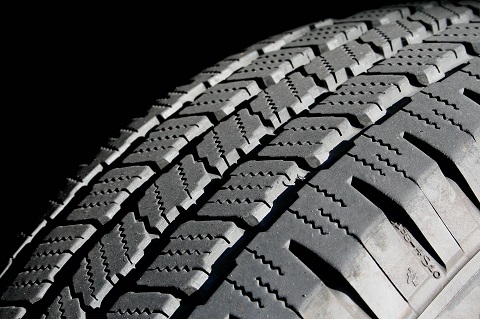
Your vehicle’s engine needs fuel to run, but gas is often costly. A more efficient driving style uses less fuel, meaning you save money. Less fuel used also means reduced emissions, which helps the environment. Here are some tips for conserving gas and waiting longer to refill your tank.
Maintain a Steady Pace
Accelerating quickly burns fuel faster than starting slower. Increasing your speed too much can also make your tires wear out sooner. When you press the brakes, your car wastes energy to bring itself to a stop rather than using inertia to keep coasting. When you see a red light, stop sign, or other obstacle ahead, take your foot off the accelerator as soon as possible. Avoiding sudden stops also helps prevent accidents. According to the U.S. Department of Energy’s Alternative Fuels Data Center, conventional gas vehicles are most efficient at about 55 mph.
If you have cruise control, set it to this speed for better efficiency. Some types of cruise control can stop and go automatically in traffic to help you save even more energy. Cruise control works best on flat, straight roads with no stops.
Turn Off The Engine During Long Stops
If you’re waiting at a drive-thru, picking up your child from school, or taking care of another task that requires you to stop your vehicle for a while, shut off the engine. The starters for newer cars are more durable than older versions, and they normally don’t need replacing unless you start your vehicle more than 10 times per day.
However, avoid shutting off your car in traffic because you may need to react quickly in an emergency. Unless your ride has stop-and-go capabilities, starting a vehicle takes a few seconds. Engines with stop-and-go systems can shut off automatically when you stop. They’ll then restart when you press the accelerator. Accessories such as the air conditioning (AC) and radio stay on to keep you and your passengers comfortable.
Open the Windows in Hot Weather and Wear a Coat in Winter
Using the AC and other accessories can reduce your fuel economy by more than a quarter. When possible, avoid using AC and open your window instead. When you open your car door on a warm day, the blast of hot air may remind you of an oven.
Opening your windows for a few minutes as you drive out of a driveway or parking lot and onto city streets helps get rid of that hot air quickly. That way, your AC won’t need to work as hard to keep you comfortable when you turn it on. Buying a sunshade for your windshield and parking in the shade can also help.
Don’t open your windows on the highway because it could use more energy than your AC. Your vehicle’s motor has to work harder and use more fuel to overcome increased wind resistance at high speeds. If you ever feel uncomfortably hot while driving, go ahead and turn on the air. Using a bit more fuel is worth avoiding heatstroke or heat exhaustion. You can use your car’s heater less in winter by wearing a warm coat and keeping the windows closed.
Improve Aerodynamics and Get Rid of Extra Weight
Remove roof rails, luggage racks, bike racks, and other exterior accessories when you’re not using them to reduce wind resistance and weight. Look at your vehicle’s interior and cargo space and remove any objects you don’t use regularly. Even storing lighter stuff, such as books or a tent from an old camping trip somewhere else, can improve the efficiency of your car, truck, or SUV. Consider getting a tonneau cover to lower drag and protect your cargo if you have a truck. Many of these covers have locks, and they’re usually waterproof.
Check Your Tires and Other Parts of Your Vehicle Often

Keeping your tires in top condition is essential for good fuel economy. Modern tires have low rolling resistance, which is the force needed to overcome inertia and get your vehicle moving. Worn treads make tires more likely to slip, increasing rolling resistance and lowering efficiency. To reduce wear and save fuel, have your tires rotated about every six months or 5,000 to 10,000 miles. Changing your tires to different positions on your vehicle regularly helps keep wear even and extend their life span.
Underinflated or overinflated tires use more fuel and increase wear. Check your tires’ air pressure once per month and adjust when needed. You can buy your own tire gauge, though many gas stations have gauges and air hoses for tires available. Many newer vehicles include an electronic tire pressure monitoring system. When the tire pressure is low, you should see a small yellow light resembling a horseshoe with an exclamation point in the middle.
Many other vehicle parts can also impact fuel efficiency, so regular maintenance is important. We offer financing for parts and repairs, so you can get the repairs and maintenance your vehicle needs as soon as possible and protect your car’s fuel efficiency.
Combine Trips and Avoid Traffic
Planning ahead and reducing the number of miles you drive is one of the best ways to save fuel. For example, buying all your groceries once per week at a nearby store is more efficient than going on a few trips to different places throughout the week. When you need to run several errands on one trip, plan your route carefully to minimize miles. If you have to travel during rush hour, consider choosing a road with less traffic. Even if it’s slightly longer, it can use less gas than sitting in stop-and-go traffic and driving at low speeds.
Choose a Vehicle With High Fuel Efficiency, and Use These Tips To Save Even More Fuel
When you’re ready for a new car, truck, or SUV, you can save money by choosing a model with good fuel economy and using the tips in this article. At Bountiful Mazda in Bountiful, Utah, we offer a variety of financing options to help you get behind the wheel of a new vehicle. Our friendly professionals can help you choose the best vehicle and the most affordable loan or lease for your needs.


